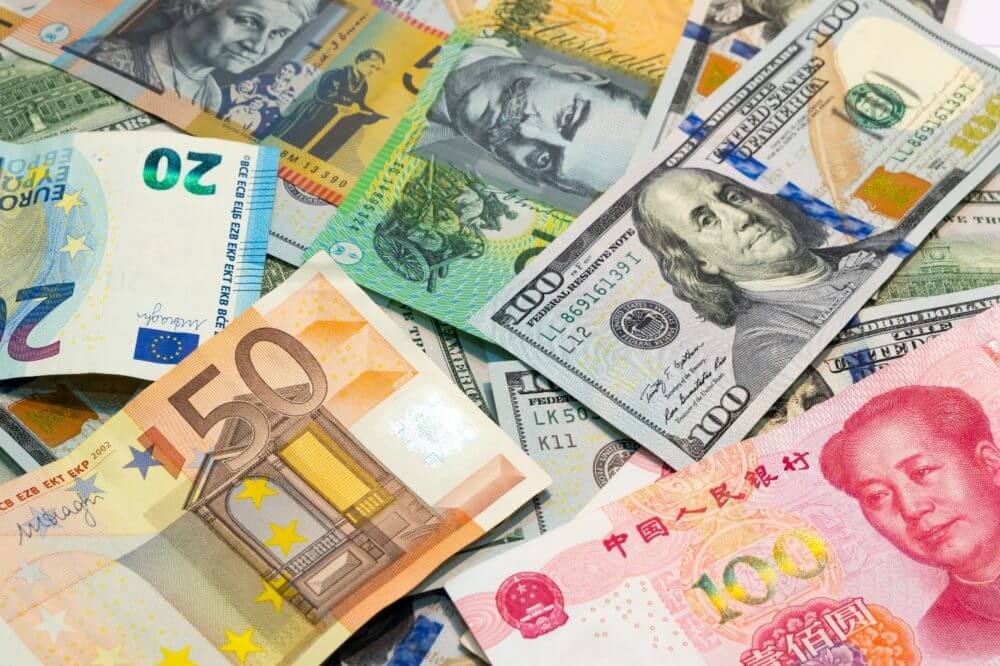Risk-off currencies rallied on Friday as the discovery of a new Covid-19 variant sent traders dashing for the safety of the Swiss franc and the Japanese yen. This new version is potentially resistant to current vaccines, scientists say. On the other hand, the growth-sensitive Norwegian crown and Australian dollar plunged in the red. Due to the Thanksgiving holidays, thin overnight volumes made forex market moves more volatile in the U.S. as investors abandoned long dollar positions and covered shorts in Japanese yen.
The new COVID-19 variant was detected in South Africa, Hong Kong, and Botswana. Thus far, scientists don’t have lots of information about it. However, they think it has an unusual combination of mutations that may make it able to be more transmissible and evade immune responses. After this news, the South African rand tumbled down by more than 2% against the greenback, reaching its lowest level since last November.
The Japanese yen had dropped to five-year lows against the dollar earlier this week. But it skyrocketed by 1.3%, reaching a high of 113.6 on Friday. Meanwhile, the euro plunged to almost 6-1/2-year lows versus the Swiss franc at 1.044 francs per euro.
Kenneth Broux, a strategist at Societe Generale in London, noted that this is a textbook flight to safety of the Swiss franc and Japanese yen due to the new coronavirus strain. The thin liquidity is also an additional factor that may accelerate the unwinding of short bond positions.
Which is the most demanded currency on the market currently?
New U.S. CFTC figures showed net bearish positioning at $10.3 billion and $1.2 billion for the Swiss franc and the yen, respectively, in the latest week. On the other hand, Gold, which soared by 1% on Friday, had a short position of over $2 billion.
ING Bank currency strategist Francesco Pesole stated that it’s not surprising to see the Japanese currency being the biggest gainer. It’s the quintessential safe haven, and besides, it was very oversold, currently. Pesole also added that another low-yielding currency – the euro was less exposed than cyclical peers such as the Aussie dollar. Positioning data showed the common currency too had been oversold, as well.
On Friday, the British Pound fell to a record low 0f 2021, ending below $1.33. The U.K. canceled flights to several countries, announcing that scientists consider the new virus variant to be the most significant one yet found.
Oil’s price also declined, causing the Norwegian crown to fall by 1.2%. The currency collapsed to its lowest level last August. Against the euro, it tumbled down by almost 1.5%.
Meanwhile, gains for the franc, yen, and euro pushed the dollar index further away from Wednesday’s 96.938, its highest level in almost 17 months, against the basket of six rival currencies. It last traded down by 0.3% at 96.45.
Pesole noted that hawkish central banks think this variant threatens their policy tightening plans, which is a potential threat. From that perspective, the greenback may be a bit more vulnerable than the common currency, especially considering that the analysts are already talking about Fed rate hikes next year.
Forex Markets had priced in one rate hike from the ECB at the end of 2022. However, some traders expect three possible increases from the Federal Reserve next year.
The Indian rupee collapsed to a record low
The Indian rupee experienced its worst week. The benchmark 10-year yield also closed at its lowest in more than two weeks due to covid fears.
Currencies and shares in Asia’s emerging markets dropped sharply as market players moved to risk-off assets. The partially convertible rupee traded at 74.87 per greenback. It tumbled down to 74.9250 earlier, its lowest level since November 1, 2021. On the week, the unit declined by 0.9%, suffering its biggest weekly loss since the week to October 8.
Murthy Nagarajan, the head of fixed income at Tata Asset Management, noted that buying we see in bonds is largely on account of the new virus variant today. The analysts now expect the RBI to be dovish due to the uncertainty.
The Reserve Bank of India plans to announce its monetary policy committee’s decision after a three-day meeting on December 8. A large section of the market has been expecting the bank to start raising the reserve repo rate to normalize the policy rate corridor to pre-pandemic levels.











